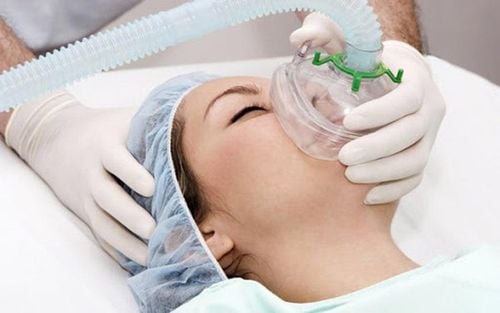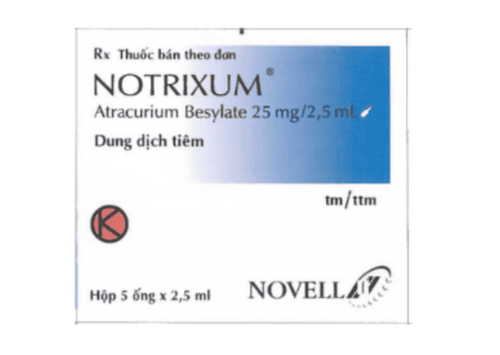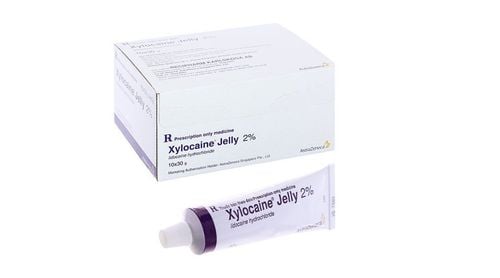This is an automatically translated article.
The article was professionally consulted by Specialist Doctor I Nguyen Duc Thong - Anesthesiologist - General Surgery Department - Vinmec Danang International Hospital.The COVID-19 epidemic is a SARS-CoV 2 virus, belonging to the Coronavirus family. COVID-19 spreads quickly from person to person, the infection rate is about 2-3, the current fatality rate ranges from 2-3% of infections depending on the country. Knowledge about SARS-CoV2 is currently limited. There is currently no vaccine or cure.
1. Review the indication for surgery with the surgeon
In the evening, move to the operating room for surgery immediately. Delayed first aid (delay until the best possible preparation). If there is no emergency, then postpone the surgery.2. Anesthesia examination
In the evening, the emergency department moved to the operating room after wearing PPE protective gear. Require minimal testing, limit other exploration if not really urgent. If another investigation is required: Consider the pros/cons of exploration and delay surgery. Still need to explore: Prioritize in the operating room if possible. Limit patient movement. If the emergency is delayed, the doctor should be examined at the place where surgery is indicated, in the isolation room, wearing PPE. After examining the Anesthesiologist, notify the operating room to prepare manpower and equipment.3. Transfer the patient to the operating room
Must plan in advance the way to transport the patient to the operating room and the way to the hospital room after surgery, it is imperative to have a separate route. Patients are required to: wear an N95 mask, wear medical protective clothing, lie on a bed, stretcher or wheelchair, do not talk while moving. Medical staff: + Before moving, notify the operating room to be ready.+ Wear PPE (Tivec) protective gear, wear N95 mask, cover shoes, prevent droplets, wear gloves, move the patient to the operating room according to the predetermined path. Minimize the use of elevators.
+ Quickly hand over, fill out the surgical safety checklist and bring it directly to the operating room, without going through an intermediary room.
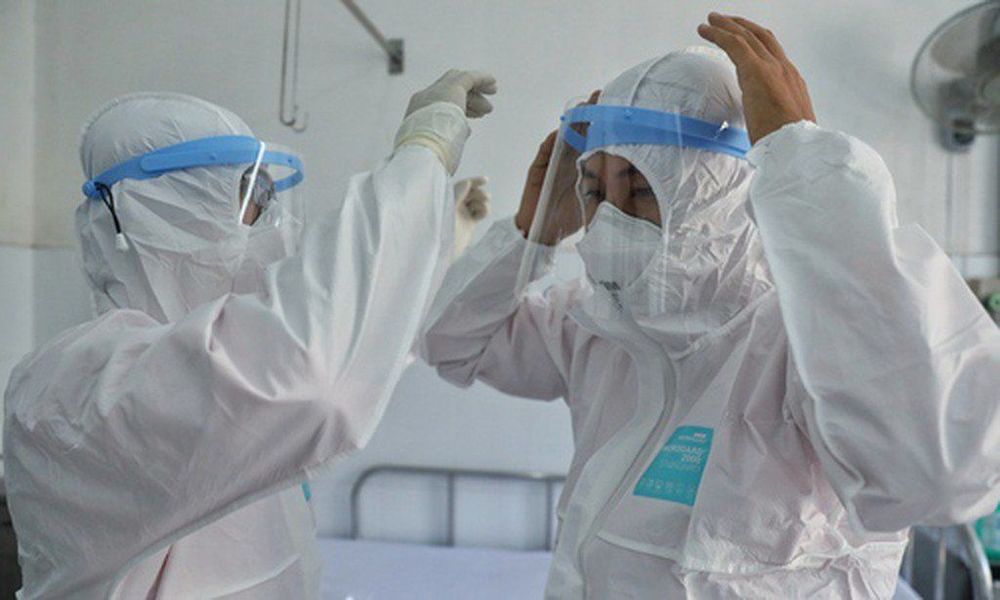
4. Treatment in the operating room
Priority is given to operating rooms with negative pressure. If the operating room has positive pressure, notify the building technician to turn off the positive pressure air conditioning system. Limit the maximum number of people entering the operating room: Anesthesiologist, surgeon, operating assistant, equipment and 1 staff member running outside. Human resources increase depending on the situation. Should choose the doctor and the most experienced staff in the operating room to perform this surgery. Minimize opening the operating room door during surgery. The communication in - outside the operating room should be via walkie-talkie, phone, signal... Do not change people during surgery unless required.5. Prepare the anesthesia machine
Place a filter at the inlet and in front of the ventilator's exhalation valve, preferably a HEPA filter, if not available, a Safe star 80 (eg MP 01785) or Safestart 55 (eg MP 01790) filter is also acceptable. Okay. If there is a PetCO2 meter: Prefer the mainstream type, install the CO2 meter after the filter (in the direction of the exhaled flow). If it is a PetCO2 side-stream type, the exhaled air sample path must be installed after the filter.6. Induction of anesthesia and intubation
Use shielding box for intubation Administer oxygen at a flow rate of 5 l/min through a mask, telling the patient to avoid coughing if possible. Apply rapid intubation procedure, muscle relaxant Suxamethonium 2mg/kg unless contraindicated. Intubation should be made only after it is certain that the cough reflex has been completely lost. Prioritize intubation by Camera, placed through a shielding box, minimizing the risk of infection. Do not intubate a flexible bronchoscope with local anesthesia unless required. If the patient drops SpO2 after stopping breathing, must ventilation through the mask: Make sure to keep the mask closed, ventilate with a low VT or squeeze a low VT balloon, to avoid letting the patient's exhaled air escape into the room. Do not place a laryngeal mask, do not use non-invasive ventilation (NIV) unless clearly indicated. Closed cuffs must be pumped prior to positive pressure ventilation. *Note: When starting anesthesia, only the anesthesiologist and anesthesiologist are in the operating room, after the endotracheal tube is placed, signal the operating team to enter the operating room. Similarly, when getting out of anesthesia, the surgical team is also required to go out, only the anesthesiologist and anesthesiologist perform the anesthetic exit, and remove the endotracheal tube.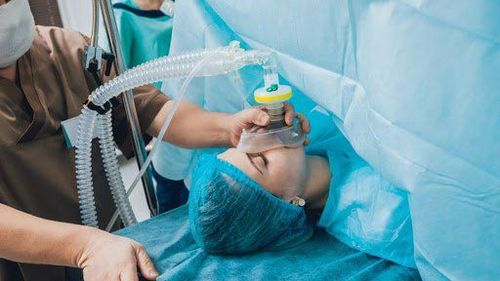
7. Maintain anesthesia
Usually, endotracheal suction is minimized. It is optimal to use a closed endotracheal aspirator. Exit anesthesia and extubate: Minimize the patient's cough and shoot droplets of secretions around. Wear surgical masks for patients after extubation. Regional Anesthesia: Regional anesthesia is not recommended for patients with signs of hypoxia, if indicated, regional anesthesia should be performed as usual with the above protective equipment for staff and patients should be the Anesthesiologist. most experienced implementation.8. After surgery
No follow-up in the recovery room. Notify the place that will receive post-surgery COVID-19 patients in the isolation ward. When transferring: patient wears N95 mask, staff wear PPE, follow the identified aisle. Prognosis must be about intensive resuscitation and mechanical ventilation. Notify the intensive care unit, then immediately transfer to the negative pressure isolation room for mechanically ventilated patients. Add sleeping pills, muscle relaxants before transferring. During patient transfer, minimize the removal of ventilators. If you have to squeeze the balloon, squeeze it with a low VT and gently avoid letting the patient cough and resist the machine. The prognosis for extubation is to go to the intensive care unit. Notify the doctor and extubate the trachea, then monitor in the operating room. Personnel wearing PPE strictly follow the PPE take-off procedure, which is the most infectious stage. Wash your gloved hands with an antiseptic solution, then remove the PPE. Immediately after removing PPE, absolutely do not touch any body area, anything until you wash your hands thoroughly with soap/disinfectant solution.Waste related to COVID-19 must be placed in a closed, yellow plastic bag. Wrap it up with a second yellow plastic bag. Then take it to treatment, immediately sterilize the aisles that the patient has just moved through according to the hospital's sterilization process. Immediately sterilize the operating room and equipment used for the patient (Including the intubation lamp, mandrin, mask, ventilator and ventilator wire, monitoring, electric cylinder... Replace the suction line. monitor PetCO2, change filters on airways).
Doctor Duc Thong has 14 years of experience in the field of Anesthesia. Especially, with 12 years working at the Department of Anesthesiology and Resuscitation at C Da Nang Hospital, Dr. Thong has extensive experience in the field of Anesthesia and resuscitation for elderly patients with many comorbidities and serious illnesses. surgery; helping many heavy and complicated surgeries to be successful. Currently, he is an anesthesiologist at the Department of General Surgery - Vinmec Da Nang International General Hospital.
Please dial HOTLINE for more information or register for an appointment HERE. Download MyVinmec app to make appointments faster and to manage your bookings easily.





